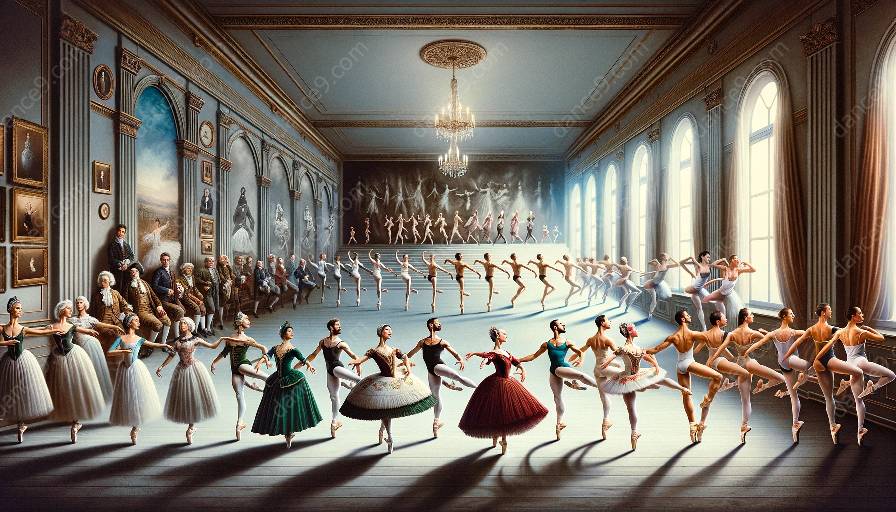Ballet, as an art form, has a rich history that has evolved through time, shaping the techniques and pedagogical approaches used in its practice. Understanding the intersections of ballet history and theory with pedagogical approaches to ballet techniques sheds light on how the art form has developed and continues to influence dancers and instructors today.
Evolution of Ballet Techniques
Before delving into the intersections, it's essential to comprehend the evolution of ballet techniques. Ballet techniques have transformed significantly over centuries, influenced by cultural, stylistic, and pedagogical shifts. From the court dances of the Italian Renaissance to the codification of techniques in the 19th and 20th centuries, ballet has undergone numerous changes, leading to the development of various styles and schools of ballet.
Ballet History and Theory
Ballet history and theory provide the foundation for understanding the art form's development. Studying the historical progression of ballet from the Italian courts to the romantic era and the classical and contemporary periods gives insights into the influences shaping ballet techniques. Furthermore, examining the theoretical underpinnings of ballet, such as the codification of movements, the role of choreographers, and the development of ballet as a narrative form, offers a comprehensive view of the art form's evolution.
Intersections with Pedagogical Approaches
When exploring the intersections of ballet history and theory with pedagogical approaches to ballet techniques, it becomes evident that historical developments have significantly influenced how ballet is taught and practiced. For instance, the codification of ballet techniques by influential figures like Pierre Rameau, Carlo Blasis, and August Bournonville has had a lasting impact on pedagogical methods. Furthermore, the evolution of ballet theory, such as the transition from the romantic era to the classical and contemporary periods, has led to adaptations in teaching methods and the incorporation of new movements and styles.
Additionally, pedagogical approaches to ballet techniques have been shaped by the cultural and social contexts in which they emerged. For example, the Russian, French, Italian, and American schools of ballet each have distinct pedagogical traditions influenced by their cultural backgrounds and historical practices. Understanding these intersections provides dance educators with valuable insights into how to effectively transmit the art form to new generations of dancers.
Impact and Continuity
The intersections of ballet history and theory with pedagogical approaches to ballet techniques have a profound impact on the continuity of the art form. As ballet techniques continue to evolve, informed by historical developments and theoretical principles, pedagogical approaches must adapt to ensure the preservation and progression of ballet as a living art form. Furthermore, recognizing the intersections between history, theory, and pedagogy facilitates a deeper appreciation of ballet's legacy and its enduring relevance in contemporary dance practices.
In conclusion, the interconnectedness of ballet history and theory with pedagogical approaches to ballet techniques is integral to understanding the evolution and continuity of the art form. By examining these intersections, dancers, instructors, and enthusiasts gain a holistic perspective on the influences shaping ballet techniques and the pedagogical methods used to transmit this timeless art form.





























